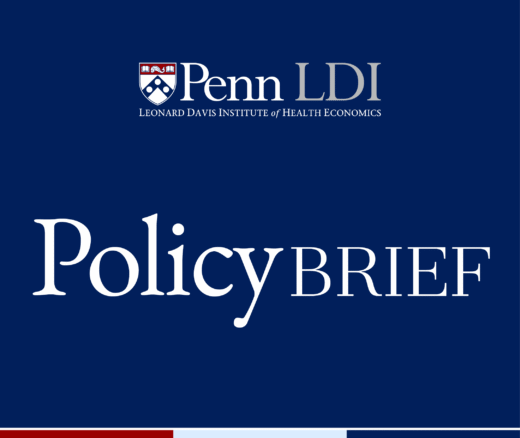
Nursing Home Incentive Program Falls Flat, New Work Explains Potential Reasons
A Major Federal Value-Based Purchasing Program Was Designed to Cut Hospital Readmissions. LDI Fellows Say the Incentives Are Too Small to Drive Real Change
Blog Post

Hospitals cannot function without nurses. But across the globe—and especially here in the U.S.—nurses are stretched thin by unsafe workloads and chronic understaffing. The result? Burnout, moral distress, and an exodus of experienced nurses from the bedside—with serious consequences for patients.
A new international policy brief from the Center for Health Outcomes and Policy Research (CHOPR) at Penn Nursing provides the strongest case yet for mandated nurse-to-patient ratios as a proven, cost-effective policy to improve nurse retention, patient safety, and health equity.
These aren’t experimental ideas anymore. From California to Queensland, Australia, governments that implemented safe staffing laws have saved lives, improved outcomes, and avoided added costs—even without increased public funding.
With massive federal funding cuts unfolding across sectors, the stakes for hospitals, policymakers, and patients are rising fast. Investing in nurse staffing may seem costly upfront, but the data shows it saves lives and money—particularly in vulnerable communities where burnout and turnover are highest. Now is the time for policymakers to act—not with more studies, but with enforceable staffing standards that protect patients and keep experienced nurses at the bedside.
We cannot train our way out of the nurse staffing crisis. To rebuild a stable nursing workforce and improve care, we need bold policy reforms that guarantee safe and manageable workloads. The evidence—from California to Queensland—is no longer theoretical. Safe staffing saves lives.
Read the full brief here.


A Major Federal Value-Based Purchasing Program Was Designed to Cut Hospital Readmissions. LDI Fellows Say the Incentives Are Too Small to Drive Real Change

Penn LDI’s Antonia Villarruel and 10 Other Authors Map Social Determinants Across Multiple Racial and Ethnic Groups

Memo: Response to Request for Analysis

Lessons from the Past, Imperatives for the Future

A New Study of a Sample of Facilities Found Half Without Any Behavioral Health Staff

Physicians Were Paid About 10% Less for Visits Involving Black and Hispanic Patients, With Pediatric Gaps Reaching 15%, According to a First-of-Its-Kind LDI Analysis